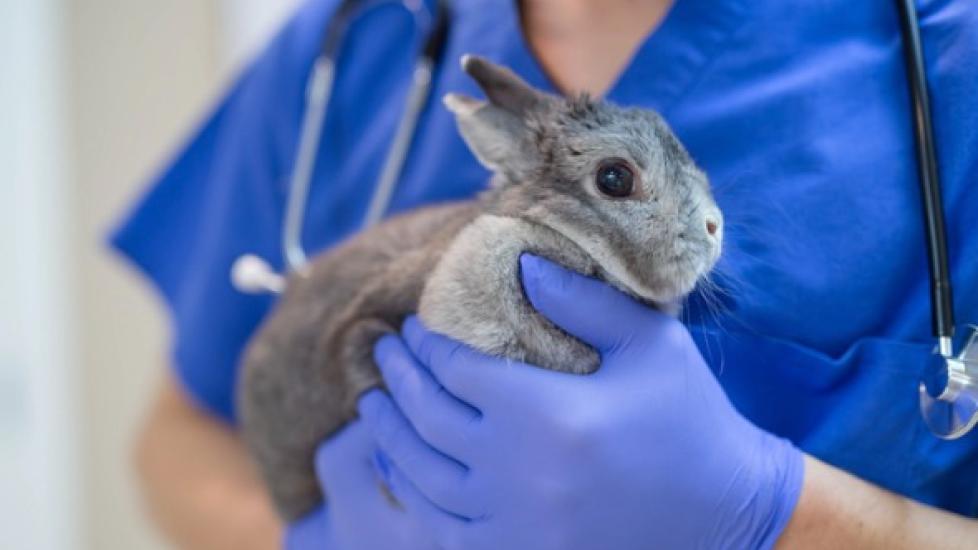Infestation of Pinworms in the Intestine in Rabbits
Oxyurids in Rabbits
Pinworms are small intestinal worms. Though commonly found in rabbits, Passalurus ambiguus, the rabbit-specific pinworm, generally does not result in significant health issues. They are mostly an incidental finding during examination after death, or when a feces sample is examined and pinworm eggs are found in the sample.
Symptoms and Types
Pinworms may cause moderate to severe itching, skin inflammation, and redness, especially in the genital and anal areas. And although rare, poor hair coat, weight loss, and rectal prolapse is possible with heavy worm infestation. Rabbits with this infection will also have poor reproductive performance.
Causes
Transmission is through the ingestion of infected feces -- when eggs are passed in the feces and ingested by the same or other rabbits in the environment. It may also spread through contamination of the environment and water. The rabbit pinworm is host specific and is not communicable to other species.
Diagnosis
Your veterinarian will want to differentiate the symptoms of pinworm infestation from other causes of itching and skin infection in the anal areas. A blood and urinalysis will be taken, along with a sample of feces, for laboratory examination. In some cases, the worms may be directly visible in the feces when the feces are analyzed.
Treatment
If there are no symptoms present, no treatment will be necessary; however, if worms are seen around the anus, treatment will be necessary. Your veterinarian will clean the adult worms away from the area and apply specific ointments eliminate the worms, along with oral prescriptions for eliminating the pinworms from the body.
Living and Management
Recurrence is common, even in rabbits that are housed alone. This is because rabbits are known to ingest their own feces and can continue to reinfect themselves.
Prevention
In addition to thoroughly cleaning a rabbit's living area, all rabbits suspected of pinworm infection should be treated immediately to prevent cross-infection.
Featured Image: iStock.com/FatCamera
